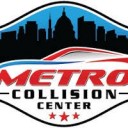Whiplash is More Than Just a Pain in the Neck
Whiplash is More Than Just a Pain in the Neck
You just got into what seemed like a harmless fender bender, but now you can’t move your head. The pain is intense, but just a few hours ago, you felt just fine. Don’t panic, but be concerned, because what you probably have whiplash. We interact with accident victims every single day here at Metro Collision Center , and that’s why we see cases of whiplash more often than we’d like. By reading this and knowing the symptoms, hopefully you will be ready if and when you or someone else suffers from whiplash.
Neck sprains and strains, universally known as whiplash, are the most frequently reported injuries in U.S. insurance claims. In 2012, the cost of claims in which neck pain was the most serious injury was about $10.8 billion, or 25 percent of the total payout for crash injuries.
What Causes Whiplash?
Whiplash typically occurs when a person's head is forcefully and quickly thrown backward and then forward. This motion can injure bones in the spine, disks between the bones, ligaments, muscles, nerves and other tissues of the neck. Professional boxers, football players and race drivers often suffer from whiplash and many of them have permanent damage caused by whiplash.
What Are the Symptoms of Whiplash?
According to the Mayo Clinic, signs and symptoms of whiplash usually develop within 24 hours of the injury and may include:
- Tenderness or pain in shoulder, upper back or arms
- Tingling or numbness in the arms
- Fatigue
- Dizziness
- Neck pain and stiffness
- Worsening of pain with neck movement
- Loss of range of motion in the neck
- Headaches, most often starting at the base of the skull
- Memory problems
- Depression
- Blurred vision
- Ringing in the ears (tinnitus)
- Sleep disturbances
- Irritability
- Difficulty concentrating
How Can It Be Treated?
See your doctor if you experience any neck pain or other whiplash symptoms following a car accident, sports injury or other traumatic injury. It is important to get a prompt and accurate diagnosis and to rule out fractures or other tissue damage that may be contributing to symptoms.
How Can it Be Prevented?
Head restraints help prevent whiplash. When a vehicle is struck from the rear, the seatback pushes against an occupant's torso and propels it forward. If the head is unsupported, it lags behind the torso until the neck reaches its limit, and the head suddenly whips forward. A good head restraint prevents this by moving an occupant's head forward with the body during a rear-end crash.
Head restraints should be properly adjusted. The top of the head restraint should be even with the top of the head or, if it won't reach, as high as it will go. The distance from the back of the head to the restraint should be as small as possible.
Whiplash is painful and can require months of rehab, but by knowing exactly what it is and knowing how to respond, it doesn’t have to be a life changer. At Metro Collision Center , we want you to be safe for many years to come, and that’s why we bring you information like this.
Sources: Mayo Clinic, Safety First and Wikipedia









Social